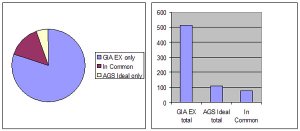- Joined
- May 3, 2001
- Messages
- 7,516
Date: 3/19/2006 2:44:55 PM
Author: JohnQuixote
All you rugged, smart looking guys are enough to make me want to go work out and read a book.
LOL! Bring it to Vegas, we can read it together when the discussion gets too heavy between the genius''s. Better yet, get a picture of you with one of your bands.
Wink















300x240.png)